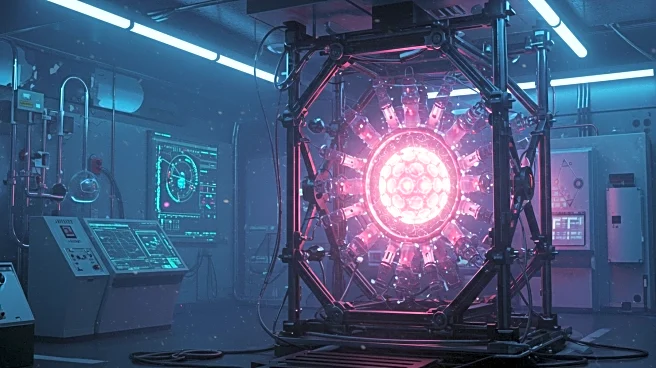What's Happening?
NASA researchers have unveiled a new method for nuclear fusion called Lattice Confinement Fusion, aimed at providing a sustainable energy source for deep-space missions. This technique involves triggering fusion reactions within the spaces between atoms in a metal solid, using deuterium, a non-radioactive hydrogen isotope. The research, published in Physical Review C, highlights the potential of this method to generate significant energy without long-lasting radioactive byproducts. Unlike conventional fusion methods that require extreme temperatures, Lattice Confinement Fusion achieves fusion-level kinetic energies within a metal lattice at ambient temperatures. This breakthrough could pave the way for future applications in space exploration and potentially on Earth.
Why It's Important?
The development of Lattice Confinement Fusion represents a significant advancement in nuclear fusion technology, offering a potential solution to the challenges of energy generation in space. By providing a method to achieve fusion at lower temperatures, this technology could reduce the complexity and cost of fusion reactors, making them more viable for long-duration space missions. Additionally, the ability to generate energy without radioactive waste aligns with global efforts to find cleaner energy sources. If successful, this technology could revolutionize power systems for space exploration and have applications in terrestrial energy production, impacting industries reliant on sustainable energy solutions.
What's Next?
Further research and development are needed to increase the reaction rates of Lattice Confinement Fusion to achieve practical power levels. NASA plans to continue exploring various reaction multiplication methods to enhance the efficiency of this fusion process. The potential applications of this technology include power systems for space missions and in-space propulsion, as well as electrical power generation on Earth. Continued collaboration among scientists and engineers will be crucial to overcoming the engineering challenges associated with this new fusion method.











